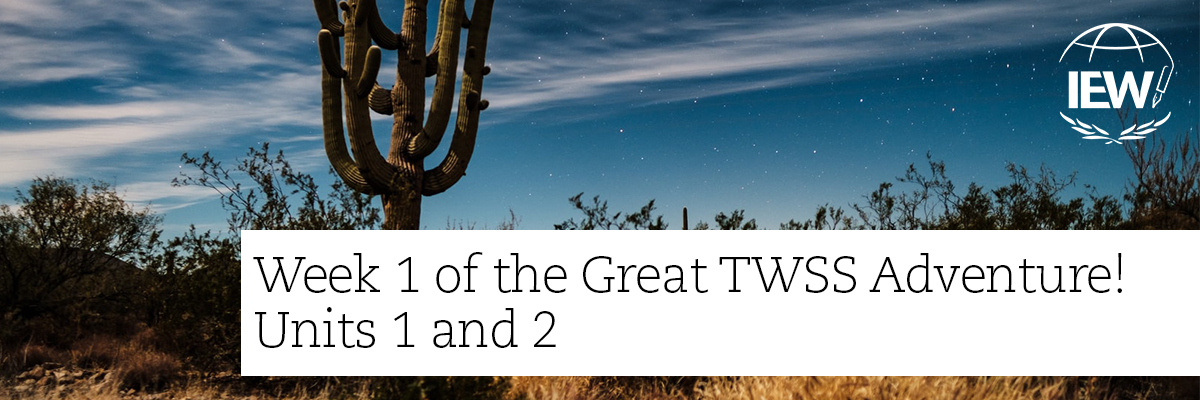
This week launches a grand adventure. The travelers are from all around the world, but they are united in a single purpose: to journey together through Teaching Writing: Structure and Style. For this first week, participants are focusing on the first two units of IEW’s Structure and Style.
The units pair nicely together. Unit 1: Note Making and Outlines is the only non-writing unit in the Structure and Style syllabus. Combined with Unit 2: Writing from Notes, the two units provide the foundation for the rest of the Structure and Style program. Participants will practice their key word outlining skills and then test their outline back orally before they write up their paragraph, which is on the topic of booklice.
Before you move into Unit 3 of the Great TWSS Adventure, Retelling Narrative Stories, consider trying your hand at one more Unit 1/2 assignment. Taken from Structure and Style for Students, Year 1 of Level A, this source text is on the giant saguaro cactus. Incidentally, the free lessons, found at IEW.com/free-lessons, introduce Units 1 and 2 at all three levels, providing another opportunity for Andrew Pudewa to model the instructional process to you. Of course, these are also perfect assignments to use with your students as you begin to teach them Structure and Style.
Giant Saguaro
The giant saguaro (suh-WARR-oh) cactus can grow over sixty feet tall. It is found in the
Sonoran Desert in Mexico and Arizona. Its branches are called arms and are covered with
spines. When it rains in winter, the saguaro blooms. Birds build nests in saguaros. Bats
eat saguaro flower nectar and fruit. You can see an army of saguaro cacti in Saguaro
National Park. Saguaros grow very slowly, taking 150-200 years to reach full height.
This giant cactus is a symbol of the American West.
This paragraph is a great one for both adults and students to practice with. If you are working with students, begin by reading the paragraph out loud, making sure to take time to stop to define unknown vocabulary and clarify context, perhaps by showing a few photos of these amazing plants and by filling in with any other background information that you think may be relevant. This helps build your students’ comprehension.
Next, begin the outline, working with your students to create it. As a final check before beginning to write the paragraph, test the outline by creating a sentence out of each line of notes. If a student’s outline doesn’t quite work, go back to the source text to adjust it. Once the outline is ready, write up the paragraph. Be sure to encourage your students throughout the process! Remember, using the free lessons, your students can simply watch Andrew Pudewa teach the process using this paragraph.
If you haven’t yet signed up to receive the weekly reminders for The Great TWSS Adventure, you can do so here. Each Monday of the event, you will receive an email detailing exactly which video segments to watch, which pages in the Seminar Notebook to read, what part of the part of the practicum to complete, and a link to our weekly drawing. Additionally it will remind you of when Andrew Pudewa and Nathan King will be live on Facebook today at noon CST, sharing an introduction to the unit being explored during the week’s upcoming adventure.
Welcome to the start of another great adventure. We are delighted to share this journey with you!
